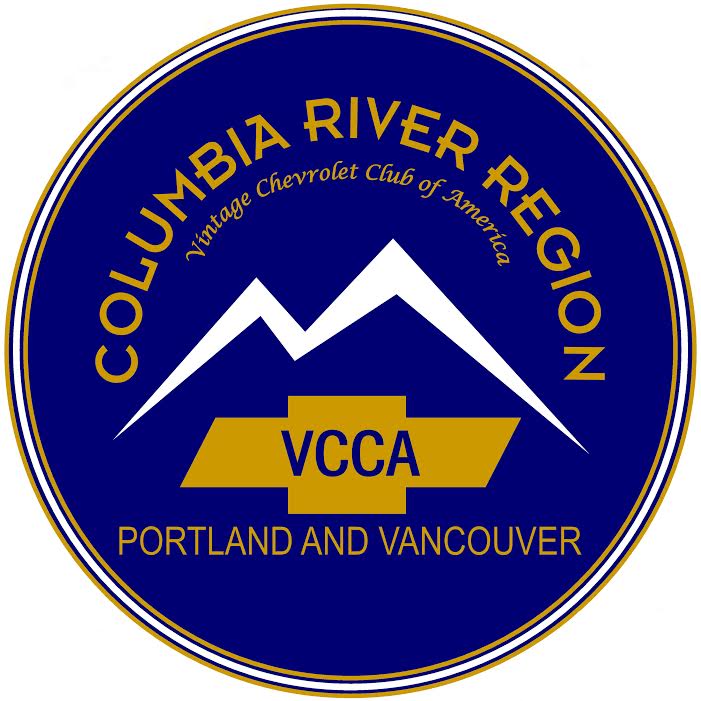We purchased the 1936 4dr Standard Sports Sedan in 1977 from my wife’s brother. OUR36 has been in her family since it was brand new. We joined the VCCA in late 1977.
The Millionth Car
The word “million” has always connotes meaning beyond its numeric meaning. “They are millionaires” makes one think they are very rich. “Thanks a million” means you are very thankful. “Look, there are a million ants on the table” really means there are a lot of them, not exactly 1,000,000 of them.
In the world of automobiles, it’s associated with success. Producing the one millionth automobile is a big deal for car maker. A recent article in Road & Track magazine looked at when several automakers reached that magic threshold.
Early “a million cars” builders and fierce competitors, Ford and Chevrolet duked it out in the early twentieth century. Ford got an early start in 1903 and built its millionth car in 1915. Chevrolet had a later start in 1911 (with a prototype), building its millionth car in 1923. Both makers did not recognize the milestone, with Chevrolet figuring it out until after the fact. Interestingly, both makers took 12 years to reach this milestone…their competition started early!
Other makes took a lot longer. Volkswagen hit their millionth Bug in 1955 after 19 years. One suspects that World War II slowed them down. World War II helped Jeep, with their millionth Jeep rolled off the line in 1952, 44 years after Willys started business. Cadillac was not an “every man’s car,” so their market made it take much longer. After being founded in 1902, they rolled a Coupe DeVille off the line in 1949.
GM hit their 100 millionth milestone in 1967, with the Chevrolet Caprice coupe.
Any guess on what car company just built their millionth car on March 20, 2020? Another hint: It’s the first electric powered car to reach this goal. The Tesla company was founded in 2003 and in just 17 years sold its millionth car, a Model Y. Do you know your Tesla models? I don’t!!
Apple Core: The Story of the Ing Family Tours
I’m not sure when I first met George Ing, but it was many, maybe 25-30 years ago, not sure where it was, but probably at a swap meet. Needless to say the discussion started with antique cars and then drifted into fruit growing. George was the manager of a large fruit orchard in White Salmon, WA, that was owned by a group in Seattle.
During the discussion George invited me and Mary to come up for a visit. Somewhere along here Del and Mary Nell entered the picture. I don’t remember how. Anyway, during our visit the discussion turned to a visit by the club to the orchard. A date was set and I put the plan together to take the club for the visit. Arrangements were made for some qualified drivers for large vans. George had several vans available from the orchard and these were the vans to be driven.
When we arrived at White Salmon we were loaded up in the vans for an extended tour of the orchard. Included was a visit to a large guest house in the orchard used by the owners of the orchard. We also visited a “test” orchard that George had established to experiment with various fruits. At the end of the tour of the orchard we partook in a lunch by George and Muriel. At the end of the tour George had prepared many sacks of fruit that was placed on a ledge around the manager’s house, which we were allowed to take home with us. A great time was had by all. (Anyone here tonight that was on that very first tour?) More about that later.
The tour to Ing’s became an annual thing for many years.
George had saved up a goodly sum of money, some of which he made by traveling the world holding seminars on growing fruit. He invested this money in an unbelievable mountain location on which he built a mansion from the large timbers used in abandoned sawmills. As the home progressed in completion George started the movement from White Salmon to the new house. George had several antique cars and trucks which he had stored in Gaston Oregon. As the storage buildings were completed at the new location George approached me about moving all his cars from Gaston to Hood River. I needed help to do this and found Jim Schoffstoll as my helper. It took us many trips, but the task was completed in a reasonable time. George was very happy with our movement and as a result offered me the job of maintaining the cars/trucks we had moved to Hood River. Again I called on Jim to help me on this project and we accomplished this for several years. During this time we continued the annual tours up to George’s place.
This was a very active time for large tours to various places. While on an All Cal tour I received a phone call from Lee Wilcox advising me that George Ing had died. A very sad day. We returned in time for the service for George and many members made the trip to Hood River.
This was the end of the tours to visit with George, or was it?
Several years went by without any contact with the Ings. One day Mary and I were passing through Hood River and had some spare time. We decided we would drop by the Ings place and pay a visit. We pulled up in the driveway and found a “Young Life” session in full force. Melissa saw us in the driveway and rushed out to greet us. We had a great visit and at the end I had the nerve to ask about the tours we used to do. Melissa responded with a resounding YES and we started to make plans for the tours again. To help me with the parking and placement of the cars Jim Schoffstoll joined my team again in this job.
The tours have continued for several years with me leading the tours for probably 30 years. I have varied the tours as much as possible and have finally run out of fresh ideas. Now back to those people that made the first tour to White Salmon. If you made the last tour in October this year you have attending my first and last tour. I am passing the Apple core over to Jim who will now be the tour leader for the Ing tour. Jim, if I can be of any help, just ask.
~ By Ray Holland
Ray and Mary Holland have been active members of the Columbia River Region of VCCA since 1975. Over the years they have led a number of tours for the club. They have also participated in a number of national Four Cylinder meets and the National VCCA meets.
If Cars Could Talk
As seen in January 2018 G&D Magazine (page 32)
If Cars Could Talk
A Late-20s Van in Japan
By Ed Gallagher, VCCA #44216, Manzanita, Oregon
ONE OF THE INTERESTING THINGS ABOUT COLLECTING old Chevrolets is knowing the history of our cars. Some have detailed stories, including who owned them and how they were used over the years. Others are mysterious survivors of years of use and, often, left in a barn or as part of a lineup in a farm field. If these cars could talk, we would likely hear some interesting stories!
On a trip visiting relatives in Japan, my wife and I took a side trip to Ishigaki in the Okinawa Prefecture. It’s the southernmost part of Japan, just 300 km off the coast of Taiwan. The island is about 88 sq. miles, has around 48,000 residents and—quite surprisingly—is the home of a vintage Chevrolet truck.
While walking around the City of Ishigaki checking out the sights, we came around a corner and there it was…an antique Chevrolet truck. What a surprise! Our son, who knows Japanese, translated the sign. It said most of what was written in English: 1926 Model (American) Superior Series Van, 2802 cc Chevrolet.
The truck looked to be in fairly good shape. The fenders and headlights, however, would indicate a 1927 model, not a 1926. The current owner must not have been a VCCA member! Was this truck made in Japan under license from Chevrolet? I knew our Chevrolet LUV pickup was of Japanese origins, but what about Chevys as old as the Ishigaki truck?
I’m sure that Chevrolet scholars in the VCCA have good information about the construction of Chevrolets in Japan from the very beginning. In the Toyota Auto Museum, I’ve learned (via the internet) that they have a 1931 Chevrolet cabriolet that was supposedly constructed in Japan, as well as a Japanese-made Ford Model A. The museum website indicated that GM built its first assembly factory in Osaka, Japan, in 1927, and they built Chevrolets there. Since the truck is right-hand drive, it could have been one of the first trucks out of the new GM factory. Or was it an import?
If cars and trucks could talk, this one would have a most interesting tale indeed. It is definitely a survivor…of typhoons, a very humid climate, and a World War.
Login to the VCCA website to access G & D Magazine with your membership.
100 YEARS OF CHEVROLET TRUCKS
Chevrolet entered the truck market for the first time in 1918 with the Model T, not to be confused with the Ford car. It was a serious hauler, a one-ton truck with a 125 inch wheel base and solid rubber rear tires. It wasn’t much of a speed machine with an engine governed to a maximum of 25 mph. Given the roads in many areas, that was probably adequate.
Bodies were supplied to Chevrolet in this era, with assembly of the bodies either at the factory or at the dealer’s shop. Martin- Parry was probably one of the first suppliers. Other companies involved with Chevrolet in the early days were Hercules, Springfield, Mifflinburg and Proctor-Keefe. Chevrolet also offered what they called a Light Delivery on their 490 car chassis.
Today, Chevrolet offers a wide variety of commercial trucks. Besides several sizes of pickups, they also offer chassis cabs, cab forwards and cargo vans.
Check out Chevy's Truck Centennial website for lots of photos and stories: http://media.chevrolet.com/media/us/en/chevrolet/centennial.html


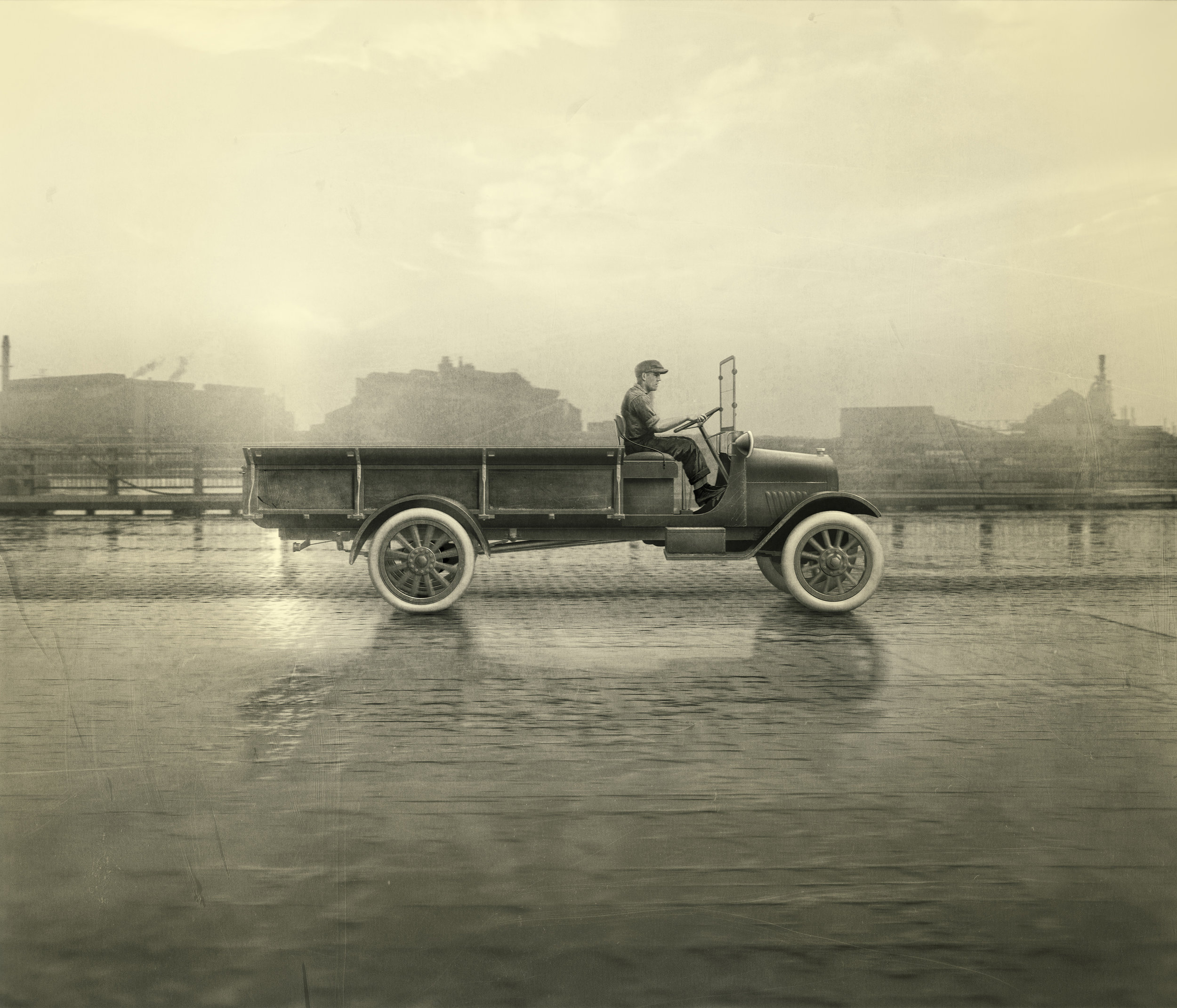
Chad's 1927 Chevy One-Ton (LM Series)
I found my 1927 Chevrolet One-ton LM series truck in the 1970’s. As you can see it needed work!
Over the ensuing years, it has been restored to like new condition with one unique addition. You’ve noticed the huge spark plug mounted in the rear…non-functional of course! I have been an avid member of the Spark Plug Collectors of America for years, actually am member #9, and have served as club President. I’ve also been a member of the Columbia River Region since 1971.
My spark plug collection numbers in the thousands of plugs. Even though I live some distance from where most of the Columbia River Region members are, I enjoy the times I can participate.
Oh yes, my truck is listed in Ripley’s Believe It or Not Encyclopedia of the Bizarre!
Chad Windham
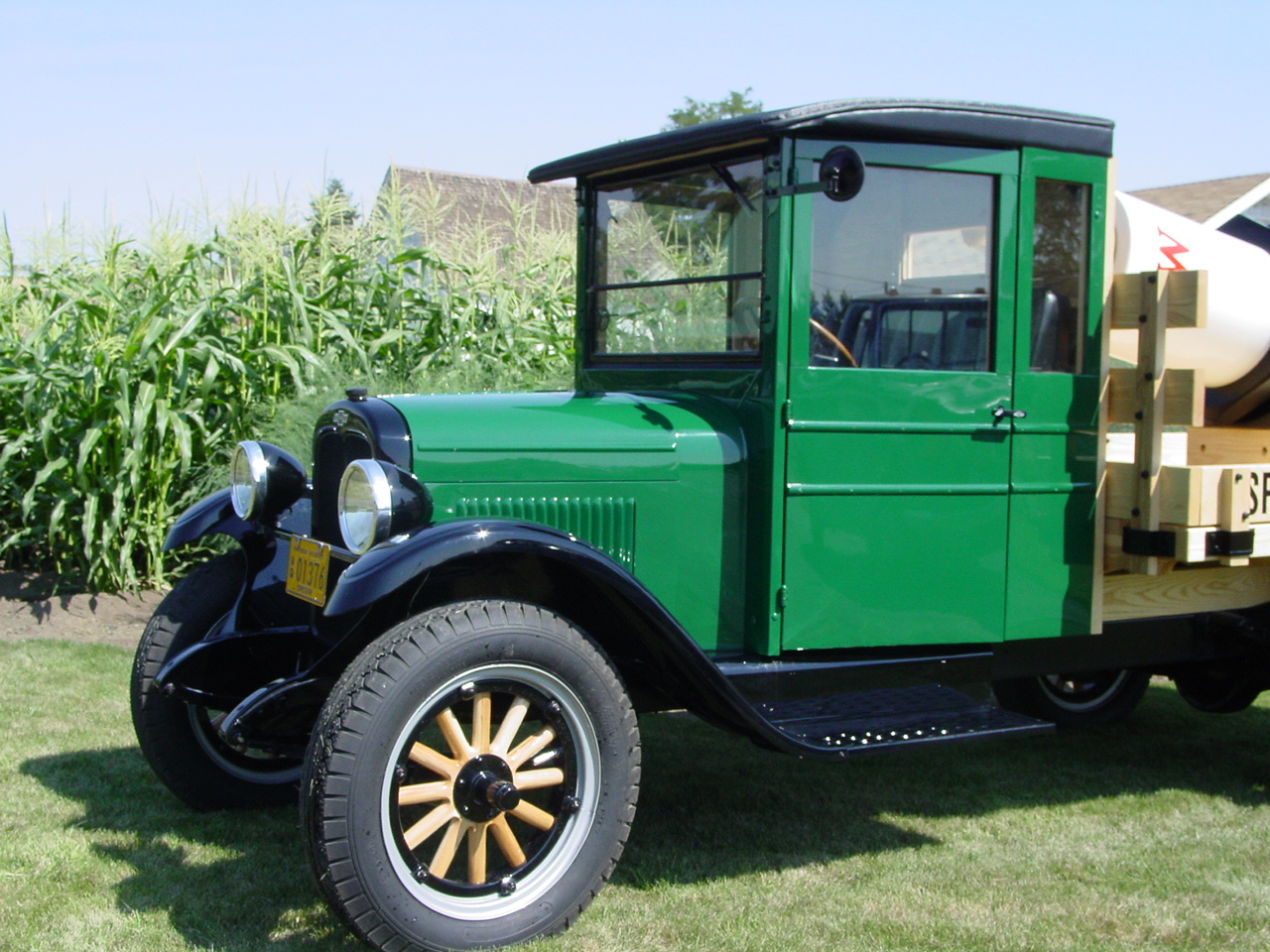
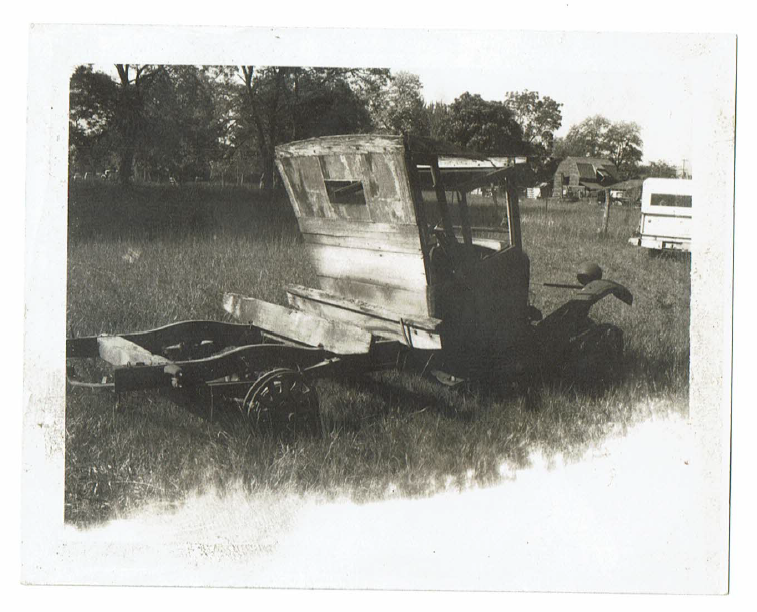
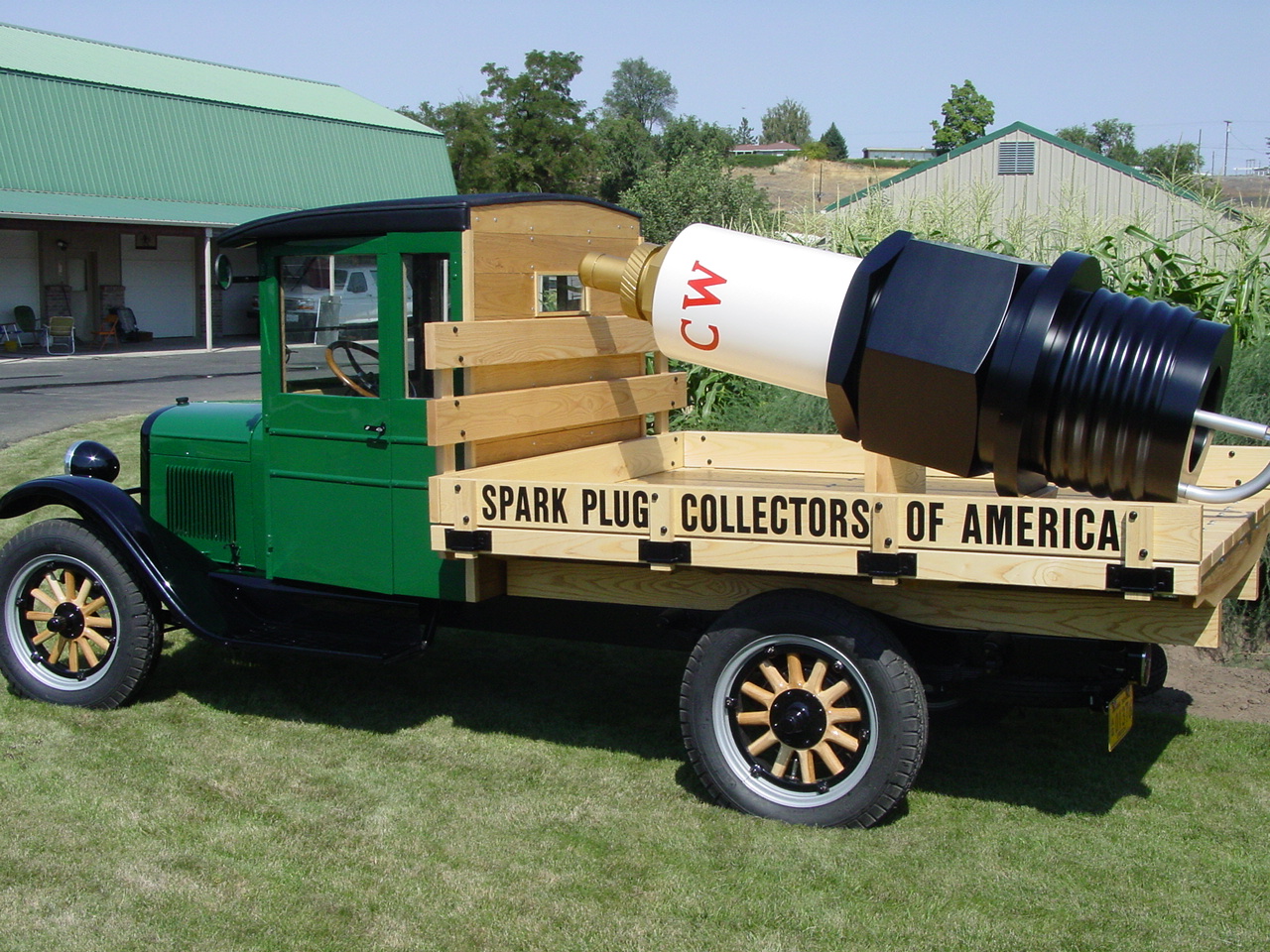

Dave & Ed's 1921 490 Touring Story
This short story began a few weeks ago when my friend Ed decided to delete some pictures from his phone. As he was doing that he came across a picture of an ad that he had take at the 2016 Portland Swap meet. It was for a 1921 490 roadster that was in a million pieces but seemed to be complete. We he initially called the guy to see if he still had the car and the gentleman did but said that he was soon going to load it up and bring it to the metal recycler.
Well, Ed being the curator of other old iron, and knowing I had an interest in the same kind of old iron, he called me to see if I would like to go and look at it. Of course I said yes, so off we went to the area of Redland, OR to check out this “treasure”. Well indeed it seemed to be a complete car as far as we could tell, and we thought surely it was better than having it go to the recycler, so we struck a deal and lo and behold we were the proud owners of this “treasure”.
A few weeks after we had struck this great deal, I hooked up my trailer and off we went to retrieve this awesome deal. The loading process went without any trouble until I went to get the seat cushion which was propped up against some other parts and a not to happy possum stuck his head out with his teeth barred and came close to tasting my hand. We really had no choice but to dispatch him so we could continue our little adventure. We did manage to retrieve all of the parts and got them all loaded on the trailer and in my pickup and headed for home.
When my wife got home from work that evening of course I had to show her what Ed and I had retrieved from the scrapper and she asked me, “What on earth did I save from the scrapper? You should have just let the man do what he was going to do. You actually paid money for that?”
I guess this is just a story that only other people who have this mental condition would understand, so now I have this “treasure” stored in my shop and I have to figure out what to do with it. Anyone out there interested in a 1921 Chevrolet 490 roadster?
Dave Koetje and Ed Gallagher
